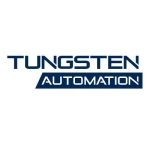We primarily use the solution for our clients.
One interesting use case we've seen is that the product team leveraged UiPath to expose an API for their customers to then fulfill a service request.
It was part of their deal that, for them to sign this large contract with one of their clients, they needed this functionality. The product team has a huge backlog, and it wasn't going to make it based on everything else they had to deliver, so they actually leveraged UiPath to expose this and give them a service they just didn't have before.
When comparing it to, for example, Blue Prism, one of the key value points is, other than the full platform in general, the ability to trigger automation on demand. Basically, when the work gets loaded into the queue, the work can then be started without having to run things on a schedule.
The solution has improved the way an organization functions. For example, in general, in the context of RPAs, it's really about the focus of picking those tasks out of people's daily efforts so they can spend more time with the customers. What you get off the back of that is dollar for dollar savings. You invest in this tool, and you get back dollars by hours, however, beyond that, there are these peripheral benefits that you get that are a little harder to measure. You’ve got to have good guys out there to capture this.
In terms of endpoint satisfaction, customer satisfaction, you have to look at it within the business and their measurements before and after you've done something to actually see what is happening and attribute it to what you've done with UiPath.
We haven't done anything that hasn't saved money yet.
At the beginning of a journey, we were looking to get maybe 1X our money back in that first year. We try to get that at least. Depending on the size of the organization and complexity, it’s possible. As you go into year two, year three, you're almost looking at a multiplier reflecting that year. For example, a four-year-old program might get a company around 4X, if not more, in return. Of course, that also depends on how far you've implemented this product. You need to put money in to get money out, in a sense.
If you've got a pipeline of X and you only have three developers, you can only chew through that pipeline at a certain current rate. You want to look at the value and say, "Well, what if we doubled our staff?"
I have a calculator that shows, for example, if you have $10 million of savings sitting on the table through 20 things in the pipeline. If I put one developer on that, it will take me three years to go through that and build that out. At the end of that $10 million of value, imagine if instead, you had everything all automated on day one. That's a total max value, and you would get somewhere around 23% to 30% of that value returned.
If you double that or if you put a staff of three developers on that same pipeline, you finish earlier and you get about 75% of the total value. If you go to four developers or five, you get closer to 83%. Now, if you put 20 developers on there, you're only going to increment it to 95%, however, then you’ve just increased your total cost as you have to try managing 25 at the same time. The main idea being, based upon your pipeline and the size of your team, you can potentially increase your total return value within a fixed time.
The ease of the use of creating the building automation is actually improving year over year. For example, there are some training programs for UiPath, and it generally takes about a week to get through it. That’s on UiPath Academy.
If you actually use it with modern design, modern objects, and all the new things that have been released recently, you actually save time on training. If that shaves 20% of your training, you can also shave 20% off of your building capability or the requirements. BY using UiPath Academy, you save time on your projects.
It's fairly easy to learn, as a solution. However, it’s not that easy where you're just going to throw non-developers into it. Your first three days of UiPath training are actually doing .net. That's the one thing the market puts out there incorrectly is that your operations team can just jump on this. You still need a developer mentality as you're still dealing with exceptions and things that aren't the way humans think.
That said, in terms of usability, it's highly useful.
UiPath Academy helps streamline and keeps employees up to speed in the solution.
The biggest value of the Academy is that it's free. That's a major piece. It's fairly well organized, and they put things into channels based upon what your role is within your RPA program or your business, and that helps you stay focused in terms of what you need to learn.
The solution needs resource locking. This kind of leads toward scaling which is one challenge. It's not major. However, it is when you have multiple bots running the same process and they need to access the same piece of information to read and write. There's not a strong capability to manage the lock and have the capability to say "I have ownership of this file. No one else can touch it" and then release it, allowing the next one to pick it up. That's a key differentiator that I see between them and Blue Prism. That one feature is lacking.
The studio design is a little different. If you go from one tool to the next, you might be a little shocked at how things are organized. I don't see them changing that any time soon. However, the design could be improved upon.
I've used the solution for about four years.
The solution seems to be stable. I haven't had any issues yet.
The solution is very scalable. I haven't pushed it to 100 plus or anything like that. However, based upon scheduling and triggers and SLA management, it's much easier to scale.
We did work with other RPA solutions in the past. The differentiation comes from the triggers, and the attended automation. The platform now is a big part of this.
For example, Blue Prism is one of the tools that we work with as well. If you want new functions, new features, say, process mining, you have to go to Celonis or someone else, whereas UiPath is providing this platform with new capabilities almost daily.
It also depends on what kind of COE you want to build. Looking at Blue Prism, they have a nice UI as well. It's very business-focused. With UiPath, you need to have some developer capacity. There's .net in there, and some people just might not get that. However, at the end of the day, if they don't get that, should they be building processors? There's a bit of a challenge there.
The initial setup is not that complex. It's more about the client's setup. For example, the domain, entries, things like that, would add to the complexity you face.
If everything goes well, you can get things set up probably in a few weeks. I would say a month or so is needed for deployment and implementors should set expectations. For example, security depends on how much the organization is ready to take it on as well. If you don't get their buy-in right away, then you're just going to get delays.
Most of the companies see a good ROI from the solution.
The pricing and licensing get a little complex. There are so many different options that you can choose from, and practice adds to the time to figure these things out. Whereas, with, for example, Blue Prism. It's a pretty standard basic model. UiPath gets a little hectic at times.
The customers that use the on-premises version tend to use the latest version of the solution.
While those using the cloud version of the UiPath apps feature are in the UK, the US users are not using that functionality. Mainly most of our focus has always been on RPA and then expansion. From what I've seen, we've mainly been using UiPath. At least on the North American side, it's been relatively new. That's why they aren't using apps yet.
We don’t have any clients that are using the solution's AI functionality in their automation program yet. I’ve only played around with it myself.
From a road mapping perspective, I'd advise potential new users that your key is the business case. If there's no business case, then this solution doesn't make sense for you to get involved or do anything else. The first part is to really understand the business case. Just to substantiate getting it into the company. Once you have that, that's basically your low-hanging fruit.
That said, the key is not to hang everything on one process, not to sit there and bank it, as the concept is a program approach. Over time, it is going to sustain itself. Companies need to be ready to look at a process and think if it's a good idea first. And as you move through the steps, you're basically doing additional checks. As you learn about the process, you're also learning what it's like behind each process and what the value add is. At each stage, users need to ensure that it makes sense to continue.
I'd rate the solution at a nine out of ten. While there's always room for improvement, market-wise they are at the top of their game.

















